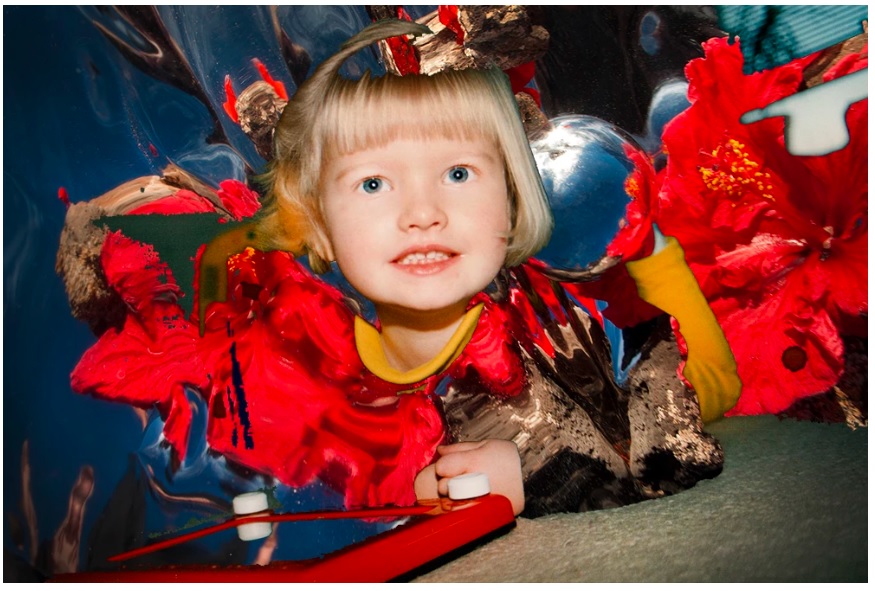Il mondo fotografico di Henriette Sabroe Ebessen contrappone colori saturi a immagini fluttuanti e specchiate. L’utilizzo della macchina come se fosse un pennello confonde lo spettatore, che costantemente si chiede “Cos’è la realtà?”
La fotografa danese Henriette Sabroe Ebessen (1994) realizza immagini surreali lavorando con riflessi e collage. Questi espedienti compositivi le permettono di esplorare varie tematiche, come l’identità, il sé subconscio e le influenze che agiscono su essi dal mondo circostante.
“… Quando vediamo una fotografia, spesso presumiamo che ciò che la realtà rappresentata sia affidabile. Nei miei lavori gioco con questo media distorcendo gli oggetti e lo spazio all’interno della cornice. Lo scopo è quello di sorprendere, confondere e lasciare lo spettatore con la domanda di cosa davvero sia reale”
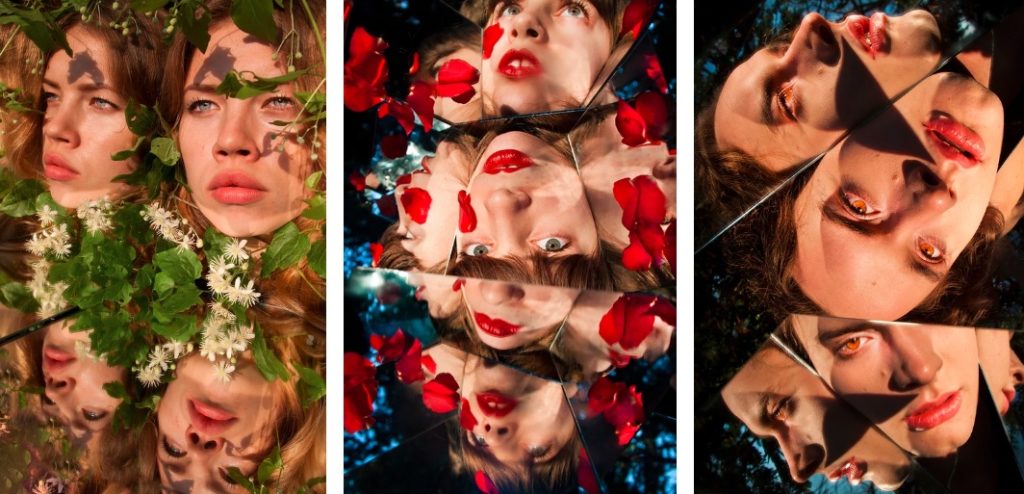
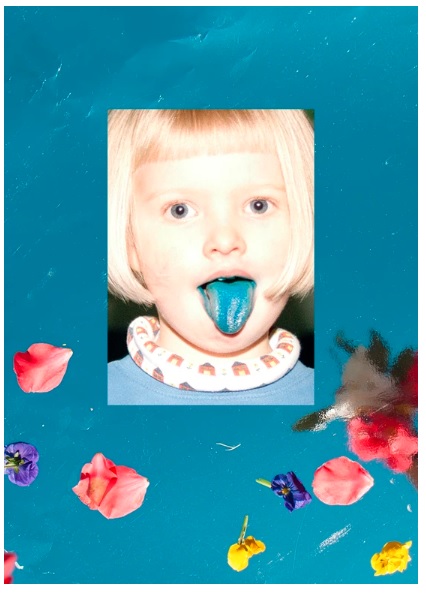
Growing up, Credit: the artist 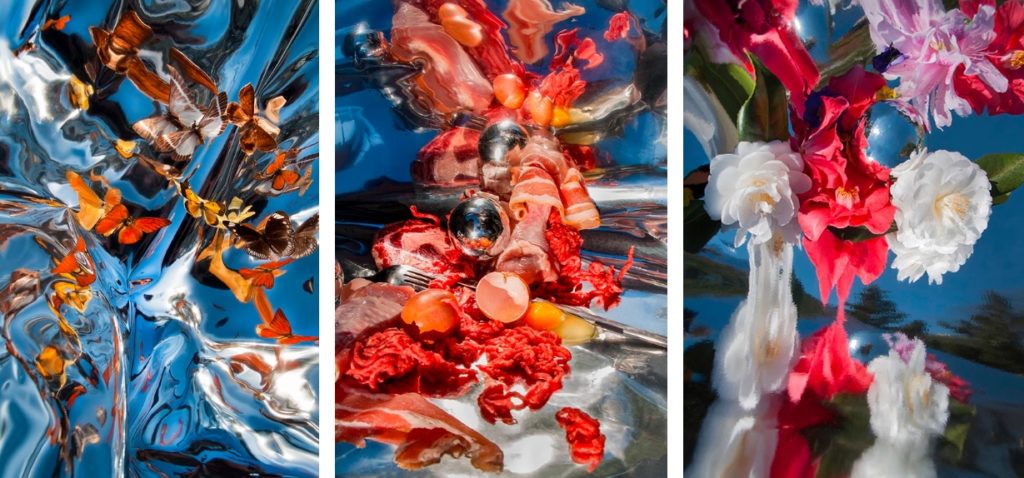
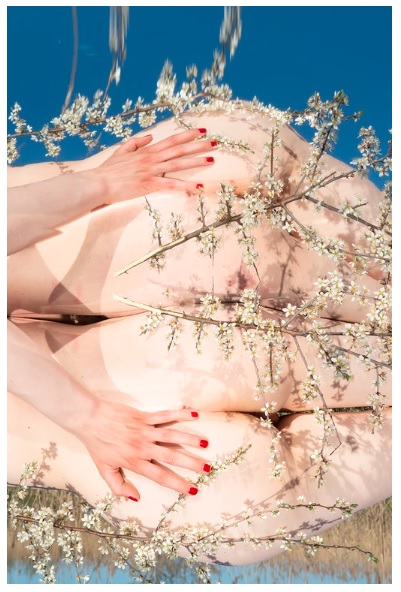
Feminine Development, 2018 – ongoing, Credit: the artist 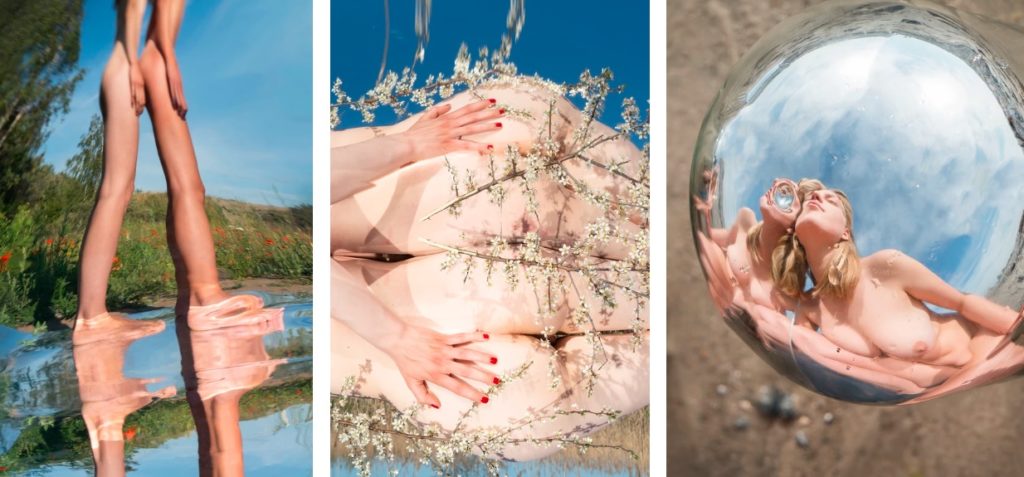
Il doppio
Il portfolio dell’artista (visibile non solo sul sito ufficiale, ma anche sulla pagina di Vogue Italia, per la quale Henriette ha lavorato) è ordinato in serie fotografiche. Una ricerca estetica e profonda sempre in divenire, che si completa di collaborazioni e incursioni in mondi apparentemente lontani, come la moda.
È del 2020 infatti il lavoro “Genesis”, un film onirico realizzato con il designer sperimentale Jens Laugesen. Laddove Henriette Sabroe Ebbesen utilizza gli specchi nel suo universo fotografico come interfaccia tra realtà e fantasia, il design di Laugesen “esplora la dialettica tra abbigliamento, corpo e genere che viene prima decostruita e poi ricucita in nuove forme e semantica”. I personaggi androgini del lavoro si ritrovano, in uno scenario surreale, a ricercare la propria identità, riflettendo sulla dicotomia interno-esterno.
Le immagini speculari sono ricorrenti nei paesaggi della Ebbesen. Esse si ritrovano, per esempio, nella serie “Growing up” basata sulla reinterpretazione dell’album di famiglia dell’artista. Qui le distorsioni non riflettono solo sul ricordo diretto della Henriette, ma coinvolgono anche il padre, e quindi un occhio esterno, autore di molte fotografie.
“Growing up è una storia collaborativa su di me e i miei familiari”, dice l’artista, “Creando la serie riscopro pezzi della mia personalità e ricordo i momenti di un’infanzia gioiosa, impavida e spensierata in un mondo che, agli occhi di un giovane adulto, sembra fragile e imprevedibile”.
LEGGI ANCHE: Dimitra Petsa e la libertà di bagnarci
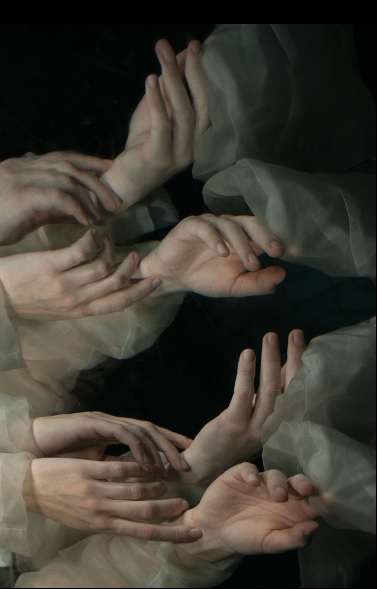
Genesis. Still 1, 2020, Digital print on textile, Editions 1-3 of 3, This is part of a limited edition set, Credit: the artist 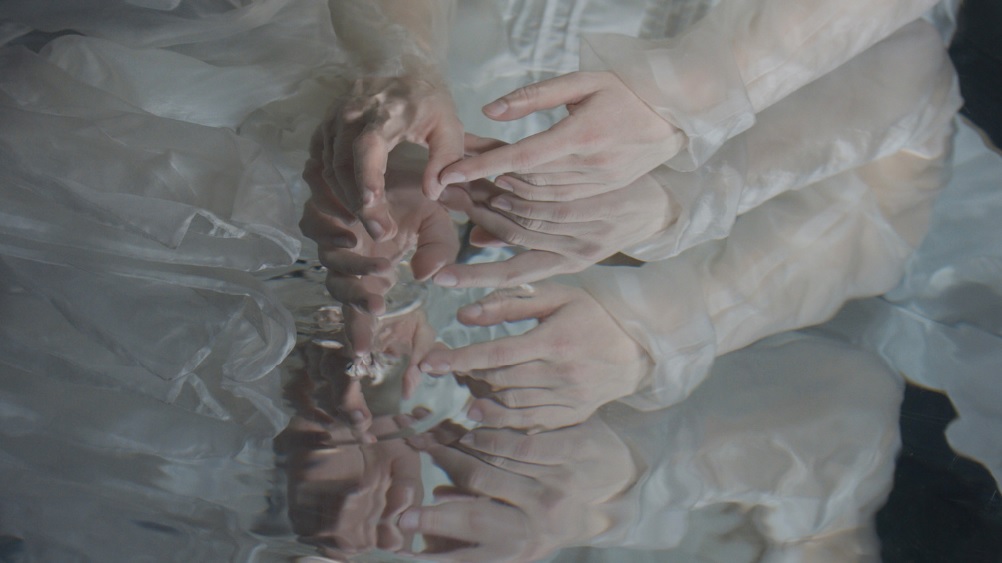
Genesis. Still 2, 2020, Archival pigment print on Hannemühle Photo Rag 308g, Edition of 3, This is part of a limited edition set, Credit: the artist 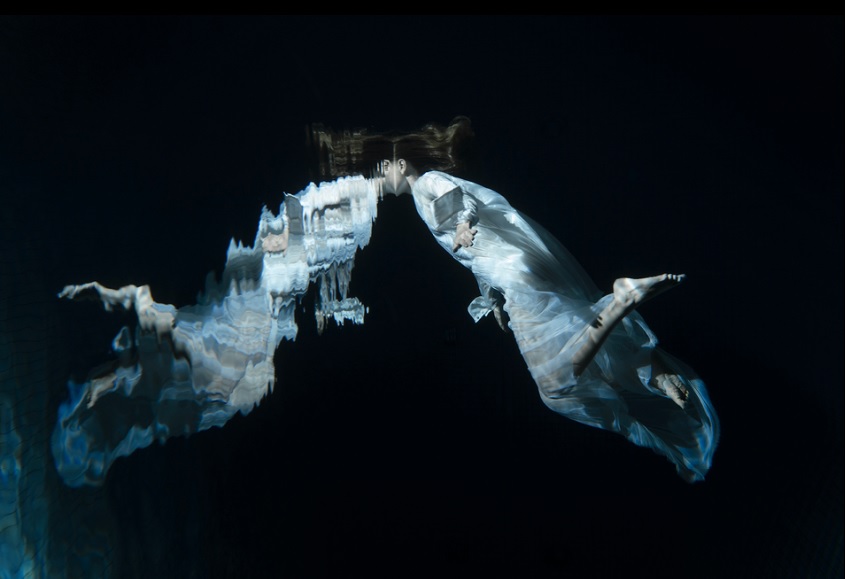
Genesis. Still 3, 2020, Archival pigment print on Hannemühle Photo Rag 308g, Edition of 3, This is part of a limited edition set, Credit: the artist 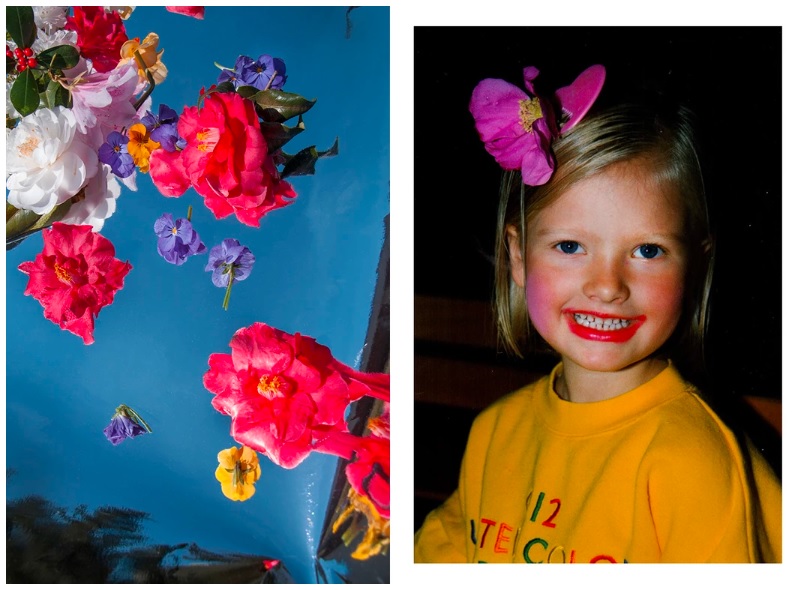
Growing up, Credit: the artist 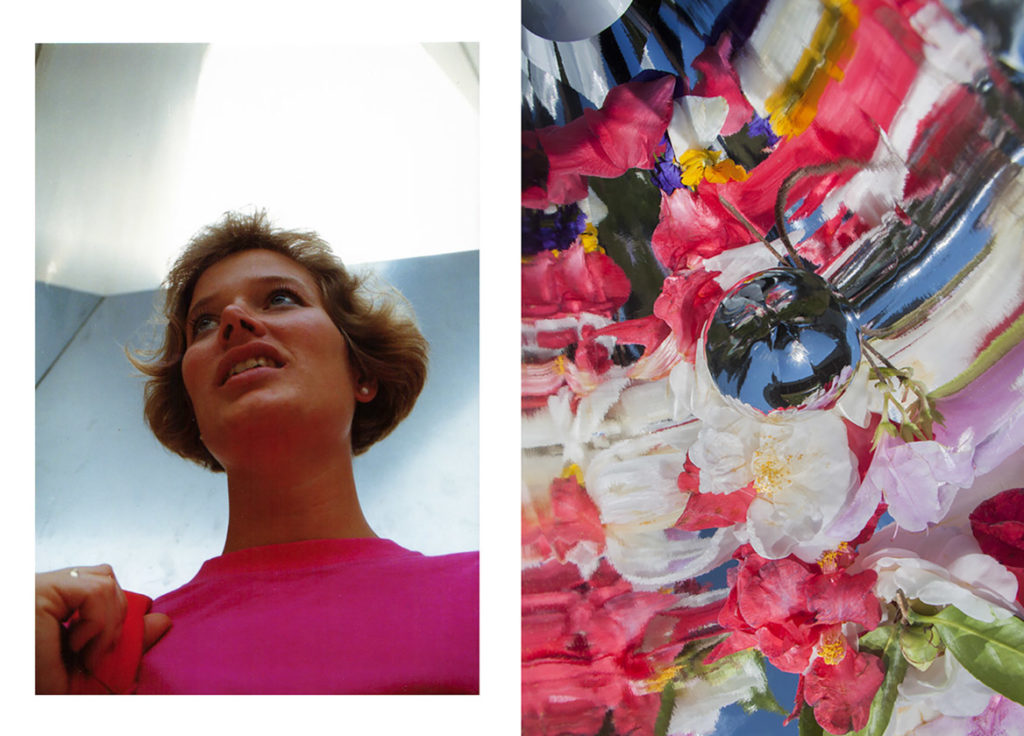
Growing up, Credit: the artist 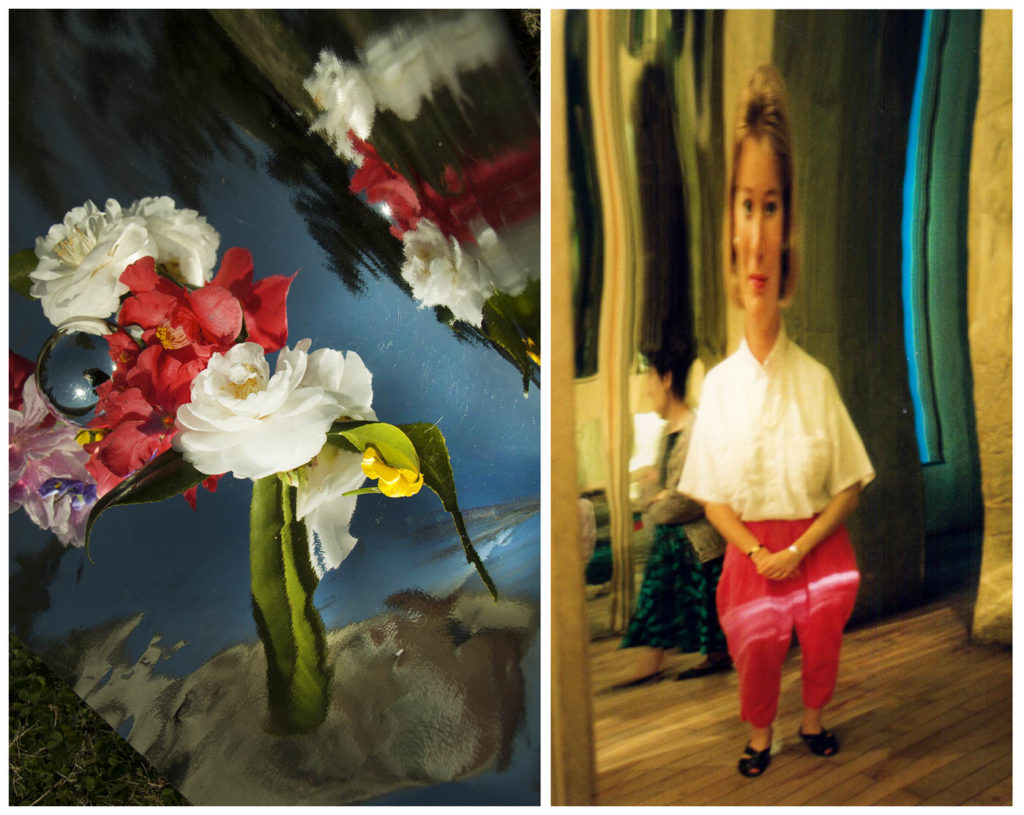
Growing up, Credit: the artist
Lo specchio e Joan Jonas
Come già citato nella descrizione di “Genesis”, lo specchio nel lavoro di Henriette Sabroe Ebessen si fa portatore della ricerca sul confine tra surreale – innaturale e rifugio verso il quale tornare quando la realtà appare ormai lontana e sfuocata.
In “Feminine Development” l’analisi – ancora in corso – dell’artista parla dell’alienazione dell’identità femminile nella società contemporanea. La storia che le pose della Ebessen ci raccontano si avvicina molto al lavoro di Joan Jonas, pioniera della video art, body art e performance. Nel 1969 la Jonas realizzò “Mirror Pieces I”, una piece nella quale attori trasportavano specchi oblunghi e riflettevano alternativamente i propri corpi e l’ambiente circostante, offrendo al pubblico una visione appiattita di se stessa come immagine all’interno della performance.
Esplorazione e negazione, reale e surreale, dicotomie convivono in un mondo frammentato sia agli occhi della Jonas che in quelli di Henriette.
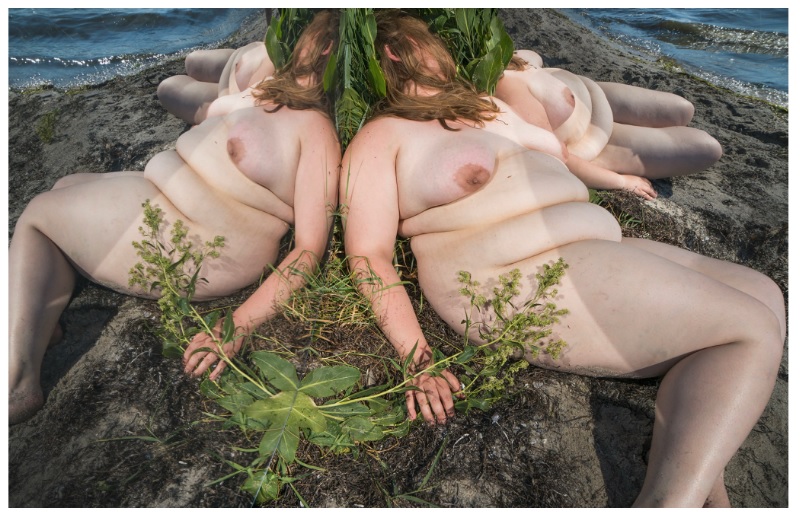
Feminine Development, 2018 – ongoing, Credit: the artist 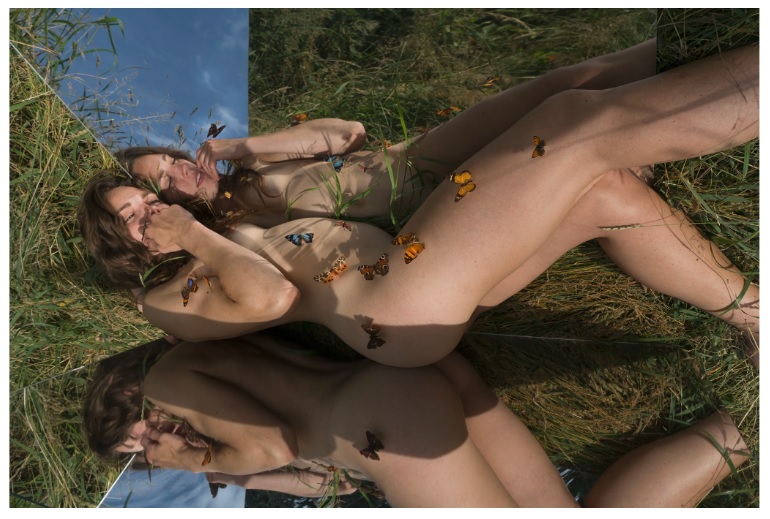
Feminine Development, 2018 – ongoing, Credit: the artist 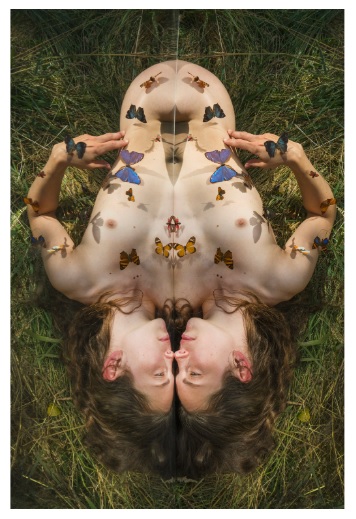
Feminine Development, 2018 – ongoing, Credit: the artist 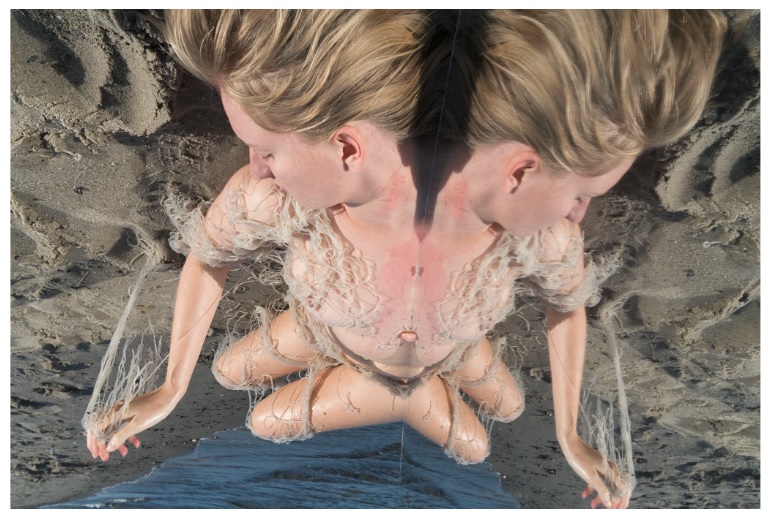
Feminine Development, 2018 – ongoing, Credit: the artist 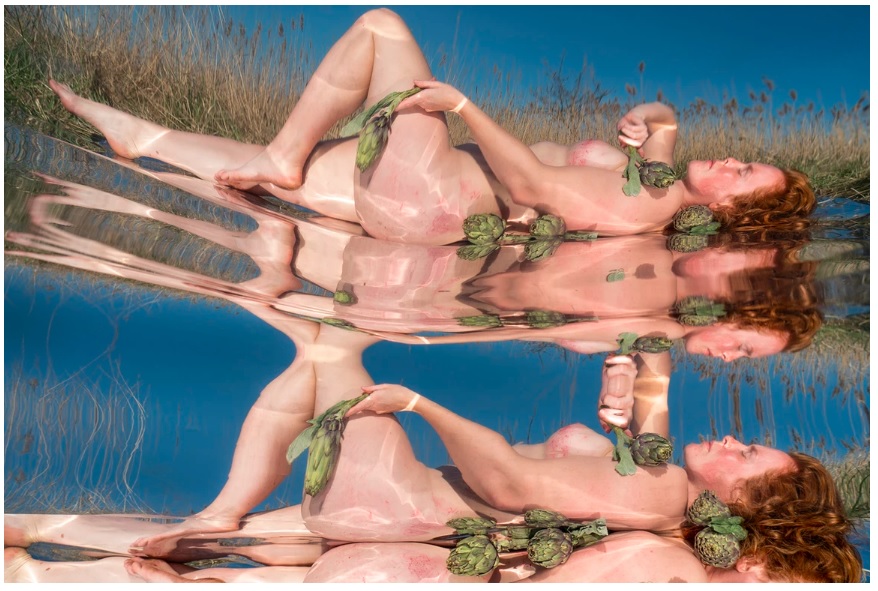
Feminine Development, 2018 – ongoing, Credit: the artist 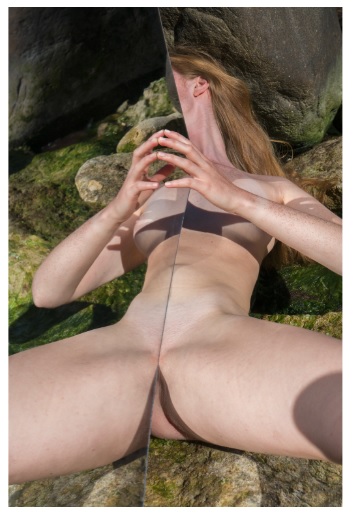
Feminine Development, 2018 – ongoing, Credit: the artist 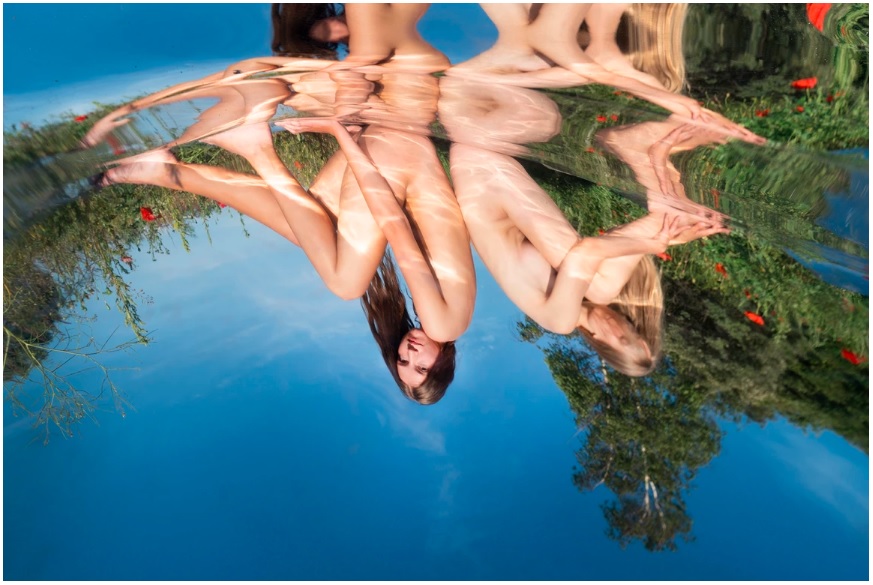
Feminine Development, 2018 – ongoing, Credit: the artist 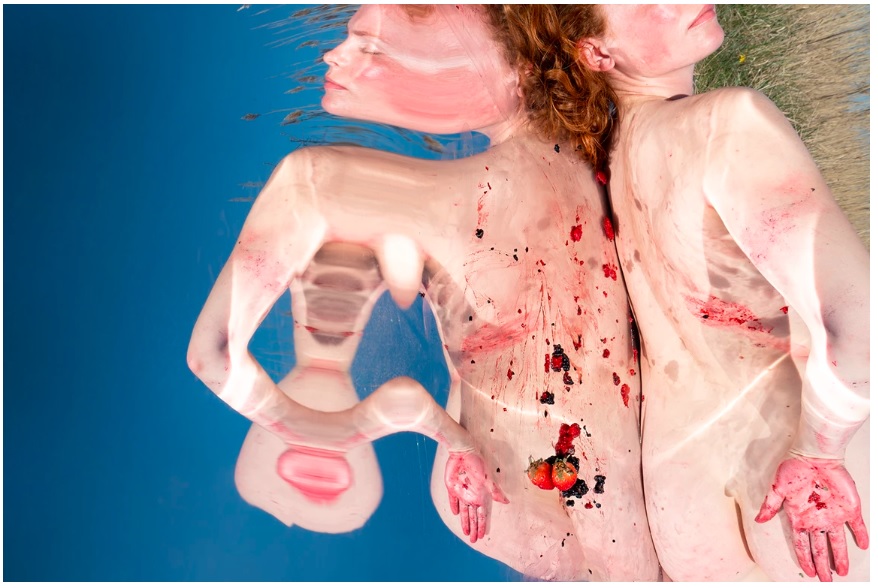
Feminine Development, 2018 – ongoing, Credit: the artist 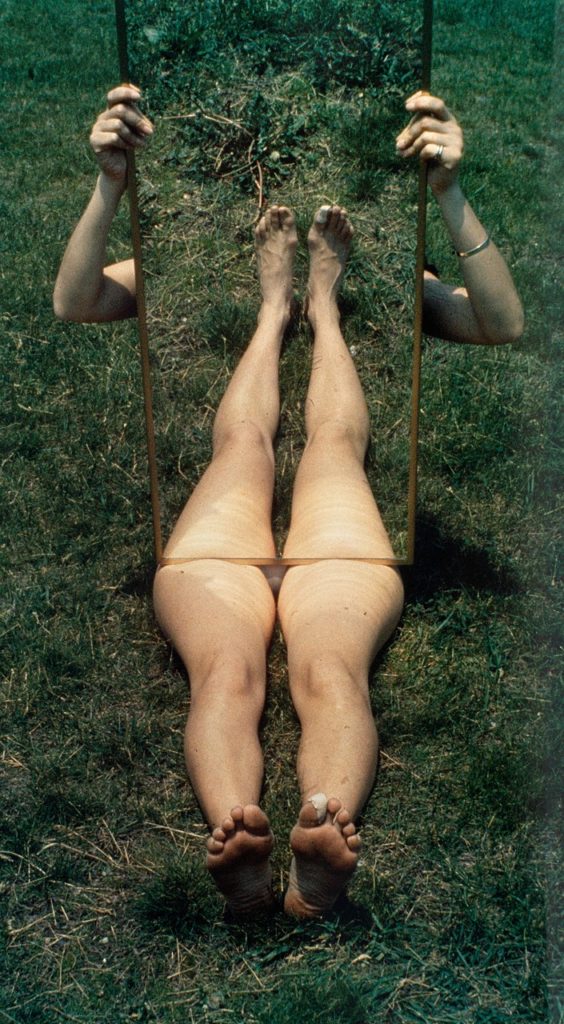
Joan Jonas, Mirror Piece I, 1969, Chromogenic print, Credit: Solomon R. Guggenheim Museum, New York, COPYRIGHT © 1969 Joan Jonas
Il caleidoscopio
Lo specchio offre, tuttavia, una moltitudine di possibilità per sviluppare una indagine: su di sé, dello spazio e dell’interazione fra questi due elementi. Una visione, quindi, caleidoscopica della realtà si insinua nella pratica della Ebessen.
Due serie sono particolarmente esplicative di questa multi-sfaccettata osservazione, “Another Face” e “Kaleidoscopic Still Life”. La prima ritrae la complessità delle personalità dell’animo umano, formata dalla somma dei ricordi e sentimenti vissuti durante l’arco di una vita; la seconda, invece, è concepita come una reinterpretazione della pittura barocca di nature morte nella quale i simboli di vita speranza e felicità, rappresentati dalle luci drammatiche e dai colori saturi, sono amalgamanti alle distorsioni provocate dalle paure e dalle ansie che ci affliggono.
L’apparenza, nel lavoro di Henriette Sabroe Hebessen la fa da padrone: ciò che è spesso non è e viceversa. Questo senso di disorientamento fa davvero ruotare lo specchio in tutte le direzioni fino a perdere il baricentro. Chi sono io? Chi è il protagonista della storia? Dove sono? Cosa è reale?
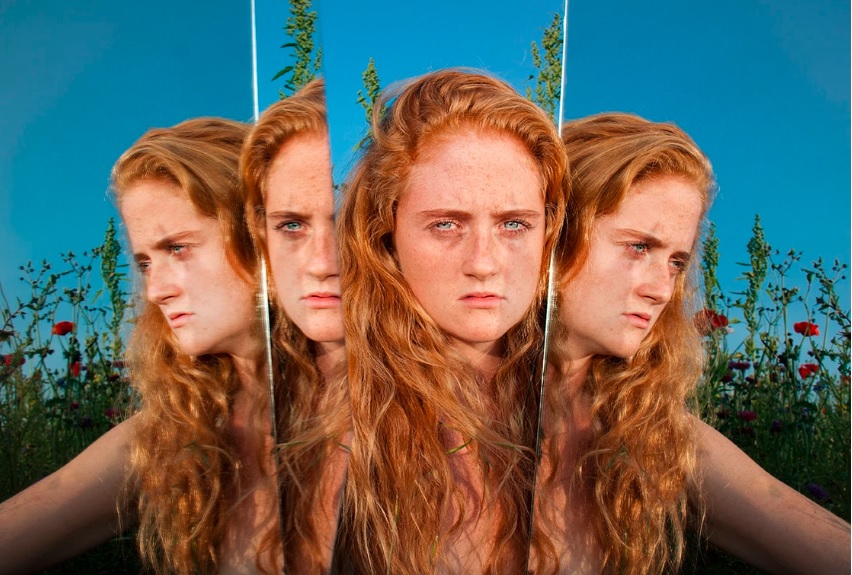
Another Face, Credit: the artist 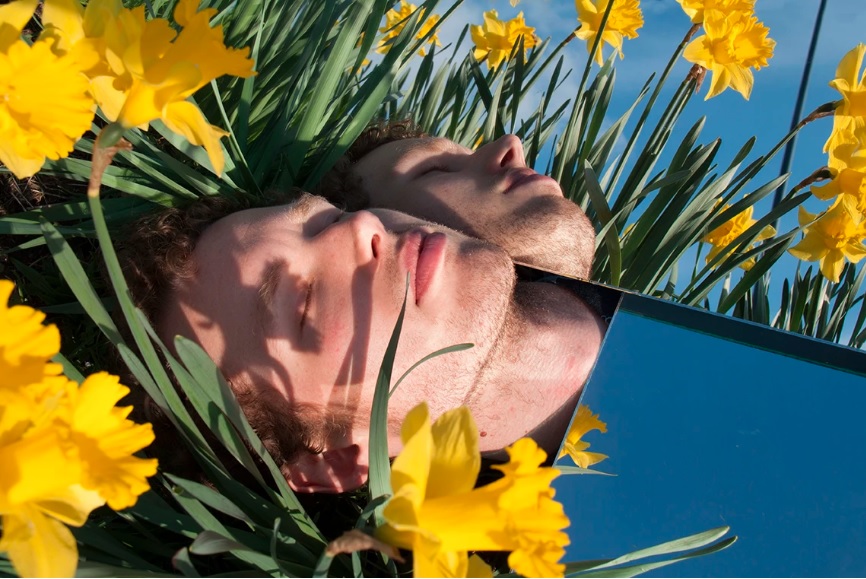
Another Face, Credit: the artist 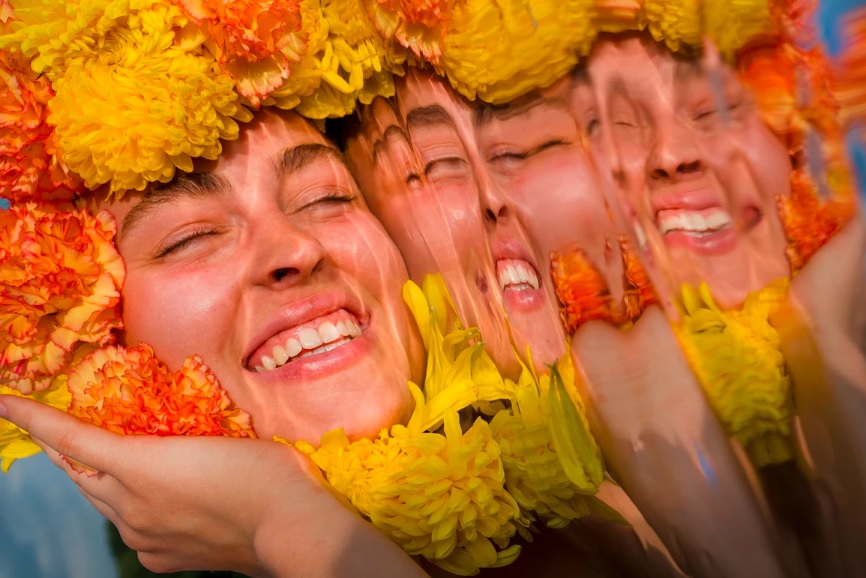
Another Face, Credit: the artist 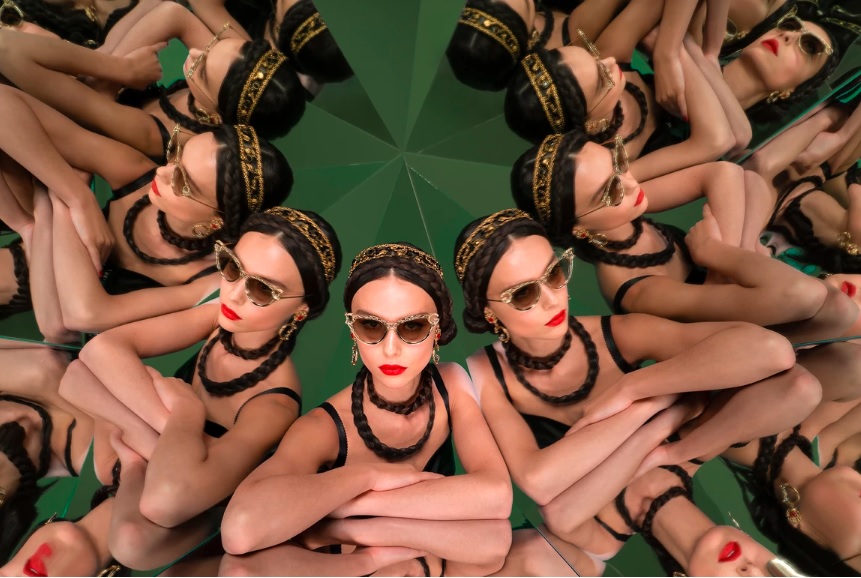
Devotion, 2019, Advertorial created for Vanity Fair Italia and Dolce & Gabbana, Vanity Fair Italia March 2019 Print and online, Credit: the artist 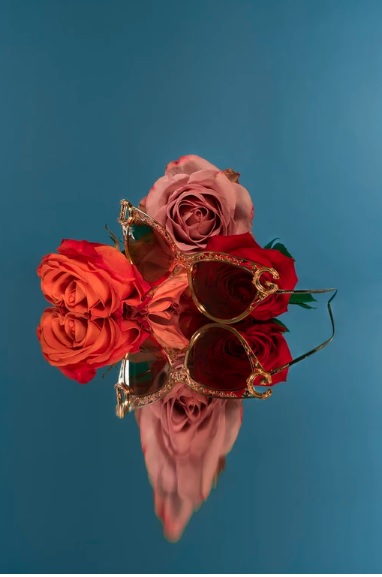
Devotion, 2019, Advertorial created for Vanity Fair Italia and Dolce & Gabbana, Vanity Fair Italia March 2019 Print and online, Credit: the artist 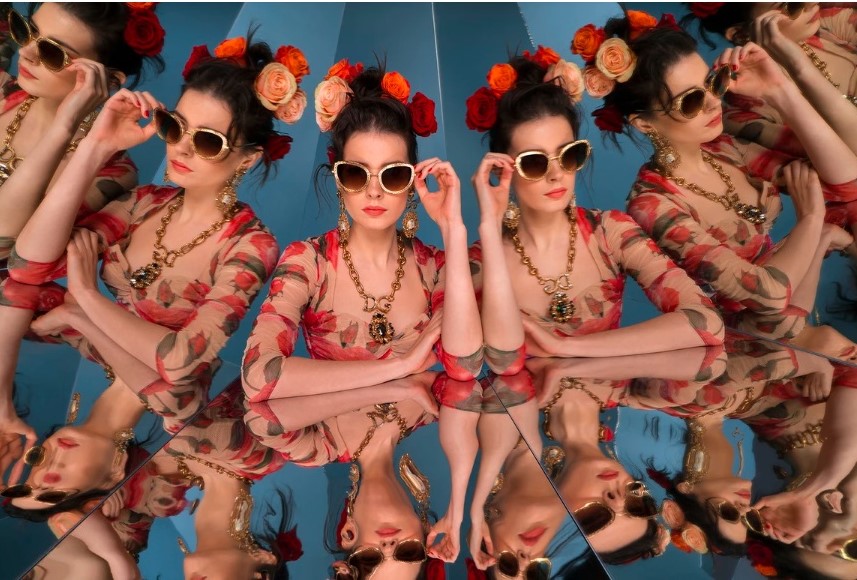
Devotion, 2019, Advertorial created for Vanity Fair Italia and Dolce & Gabbana, Vanity Fair Italia March 2019 Print and online, Credit: the artist 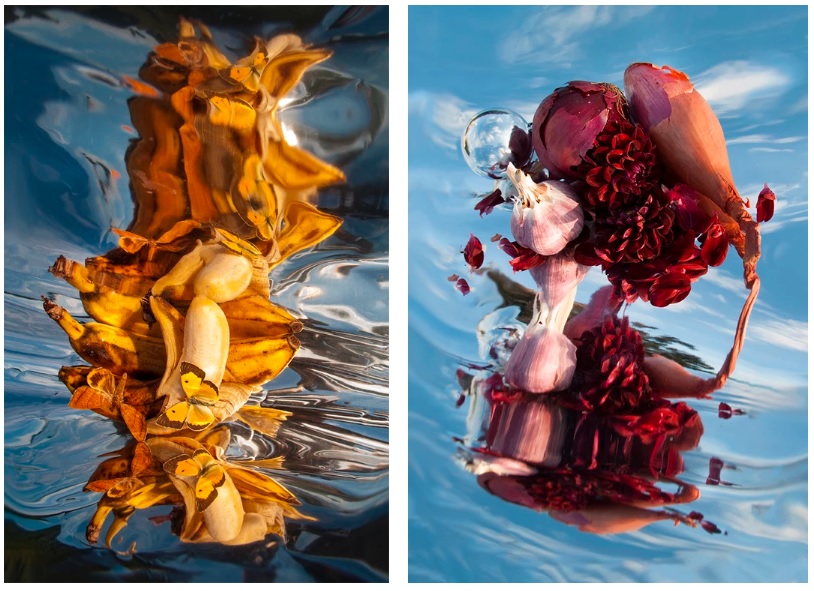
Kaleidoscopic Still Life, Credit: the artist 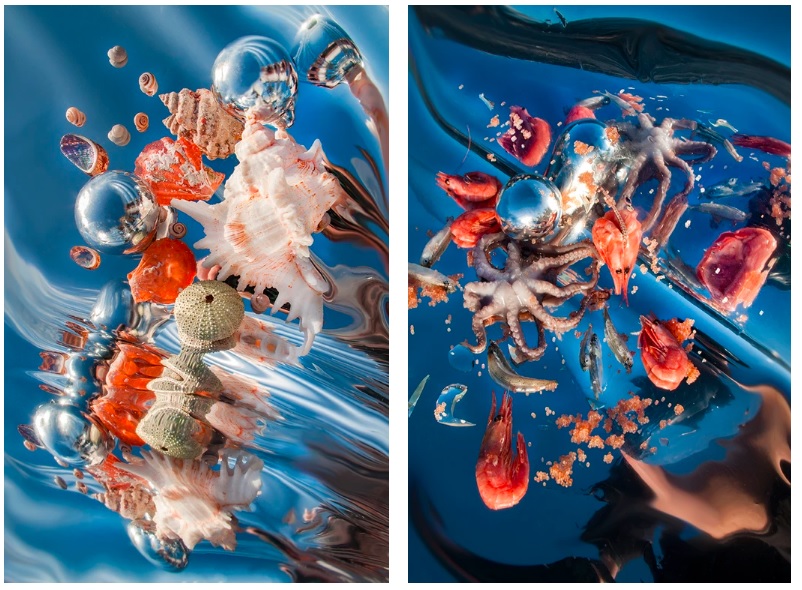
Kaleidoscopic Still Life, Credit: the artist 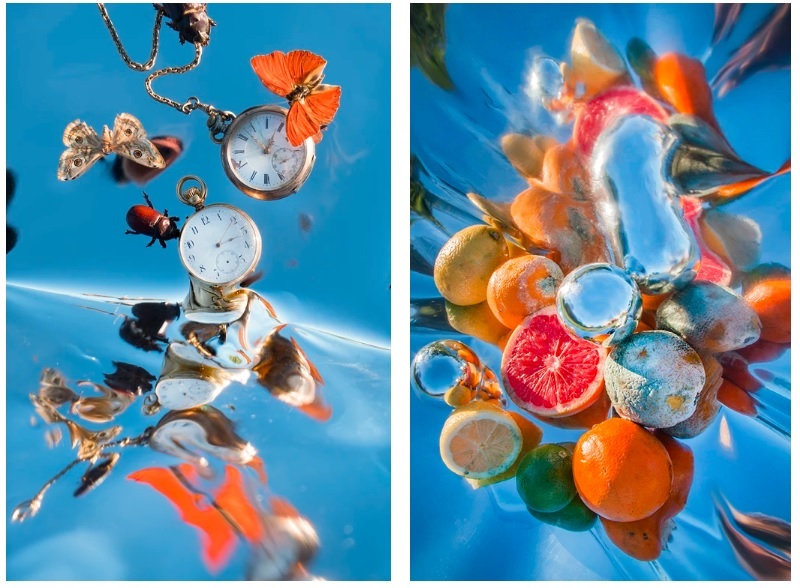
Kaleidoscopic Still Life, Credit: the artist
LEGGI ANCHE: Johnny Smith. Dissacrare per ridere
ENGLISH
Henriette Sabroe Ebessen – Kaleidoscopic reality
Henriette Sabroe Ebessen’s photographic world contrasts saturated colors with floating, mirrored images. The use of the camera as if it were a brush confuses the viewer, who constantly asks himself “What is reality?”.
Danish photographer Henriette Sabroe Ebessen (1994) creates surreal images working with reflections and collages. These compositional expedients allow her to explore various themes, such as identity, the subconscious self and the influences acting on them from the surrounding world.
“…When we see a photograph, we often assume that what is represented is reliable. In my work I play with this media by distorting objects and space within the frame. The aim is to surprise, confuse and leave the viewer with the question of what is really real”.
The double
The artist’s portfolio (visible not only on the official website, but also on the Vogue Italia page, for which Henriette worked) is ordered in photographic series. An aesthetic and profound research always in progress, which is completed by collaborations and forays into apparently distant worlds, such as fashion.
The work “Genesis“, a dreamlike film made with the experimental designer Jens Laugesen, dates back to 2020. Where Henriette Sabroe Ebbesen uses mirrors in her photographic universe as an interface between reality and fantasy, Laugesen’s design “explores the dialectic between clothing, body and gender that is first deconstructed and then stitched into new forms and semantics”. The androgynous characters of the work find themselves, in a surreal scenario, searching for their own identity, reflecting on the dichotomy between inside and outside.
The mirror images are recurrent in Ebbesen’s landscapes. They are found, for example, in the series “Growing up” based on a reinterpretation of the artist’s family album. Here the distortions not only reflect on Henriette’s direct memory, but also involve her father, and thus an external eye, the author of many photographs.
“Growing up is a collaborative story about me and my family,” says the artist. “By creating the series I rediscover pieces of my personality and remember the moments of a joyful, fearless and carefree childhood in a world that, in the eyes of a young adult, seems fragile and unpredictable.
The mirror and Joan Jonas
As already mentioned in the description of “Genesis”, the mirror in Henriette Sabroe Ebessen’s work becomes the bearer of the research on the border between surreal – unnatural and refuge to which to return when reality now appears distant and blurred.
In “Feminine Development” the artist’s analysis – still in progress – talks about the alienation of female identity in contemporary society. The story that Ebessen’s poses tell us is very close to the work of Joan Jonas, pioneer of video art, body art and performance. In 1969 Jonas created “Mirror Pieces I“, a piece in which actors carried oblong mirrors and alternately reflected their bodies and their surroundings, offering the audience a flattened view of themselves as an image within the performance.
Exploration and negation, real and surreal, dichotomies coexist in a fragmented world both in Jonas’ and Henriette’s eyes.
The kaleidoscope
The mirror offers, however, a multitude of possibilities to develop an investigation: about oneself, space and the interaction between these two elements. A kaleidoscopic vision, therefore, of reality creeps into the practice of Ebessen.
Two series are particularly explanatory of this multi-faceted observation, “Another Face” and “Kaleidoscopic Still Life“. The first portrays the complexity of the personalities of the human soul, formed by the sum of memories and feelings lived during a lifetime; the second, instead, is conceived as a reinterpretation of Baroque still life painting in which the symbols of life, hope and happiness, represented by dramatic lights and saturated colors, are mixed with the distortions caused by fears and anxieties that afflict us.
Appearance in Henriette Sabroe Hebessen’s work is the master: what it is often is not and vice versa. This sense of disorientation really makes the mirror rotate in all directions until it loses its centre of gravity. Who am I? Who is the protagonist of the story? Where am I? What is real?

